Elephant Seals - San Simeon, Ca.
Nov 28, 2019 15:19:08 #
While in Morro Bay I took a trip up the coast to see the Elephant Seals. They are starting to come to shore.
Below is some info from http://www.elephantseal.org/theseals.htm go to the site for more info if interested. It is quite interesting to see and watch them.
Northern Elephant Seal (Mirounga Angustirostris)
The northern elephant seal is the largest seal in the northern hemisphere and the second largest seal in the world (after the southern elephant seal). Adult males are 14 to 16 feet (4 to 5 m) in length and 4,000 to 5,000 pounds (1,400 to 2,300 kg) in weight. The females are much smaller at about 9 to 12 feet (2.5 to 4 m) in length and weigh 900 to 1,800 pounds (400 to 800 kg). Pups are 3 to 4 feet (1 m) long at birth and weigh about 70 pounds (32 kg).
Elephant seals derive their name from their great size and from the male's large nose, which serves to intimidate other males both through its size and its effect on their loud challenge call in the competition for females. Males begin developing this enlarged nose, or proboscis, when they reach puberty at about five years, and it is fully developed by eight to nine years.
In the open ocean eight to ten months of the year, they come ashore twice a year – in the winter for the pupping and mating season, and in the late spring and early summer to molt and grow new fur. Juveniles, not participating in the pupping and mating season, come ashore for a month during the September to December period.
Along with the whales, elephant seals were heavily hunted from the 18th century to the early 20th century, primarily for their blubber which was processed into oil for lamps and lubrication. The last surviving colony was on Guadalupe Island, unusual among islands off the Pacific coast of North America in its distance from the mainland (170 mi, 270 km). It is estimated that the population of that colony dropped to as low as 50 seals, putting the species at the very edge of extinction. The development of kerosene and protection by Mexico in the early 20th century greatly reduced their harvesting. Since that time their population has grown to 225,000 and it continues to increase. There is, unfortunately, no information on their population before they were hunted.
Northern elephant seals are found in the eastern and central North Pacific Ocean from Mexico's Baja California to the Gulf of Alaska. They birth, breed and molt on Islands and the mainland from the middle of California to the middle of Baja California. Using GPS signals, elephant seals have been tracked from rookeries at Año Nuevo, north of Santa Cruz, California, along with a few from Isla Cedros off the coast of Baja California. Those tracks provide us with a picture of the range of these animals. They travel as far as 3,000 mi, (4,800 km) from the rookery and make two round trips each year. Click HERE to see the individual seal tracks.
Below is some info from http://www.elephantseal.org/theseals.htm go to the site for more info if interested. It is quite interesting to see and watch them.
Northern Elephant Seal (Mirounga Angustirostris)
The northern elephant seal is the largest seal in the northern hemisphere and the second largest seal in the world (after the southern elephant seal). Adult males are 14 to 16 feet (4 to 5 m) in length and 4,000 to 5,000 pounds (1,400 to 2,300 kg) in weight. The females are much smaller at about 9 to 12 feet (2.5 to 4 m) in length and weigh 900 to 1,800 pounds (400 to 800 kg). Pups are 3 to 4 feet (1 m) long at birth and weigh about 70 pounds (32 kg).
Elephant seals derive their name from their great size and from the male's large nose, which serves to intimidate other males both through its size and its effect on their loud challenge call in the competition for females. Males begin developing this enlarged nose, or proboscis, when they reach puberty at about five years, and it is fully developed by eight to nine years.
In the open ocean eight to ten months of the year, they come ashore twice a year – in the winter for the pupping and mating season, and in the late spring and early summer to molt and grow new fur. Juveniles, not participating in the pupping and mating season, come ashore for a month during the September to December period.
Along with the whales, elephant seals were heavily hunted from the 18th century to the early 20th century, primarily for their blubber which was processed into oil for lamps and lubrication. The last surviving colony was on Guadalupe Island, unusual among islands off the Pacific coast of North America in its distance from the mainland (170 mi, 270 km). It is estimated that the population of that colony dropped to as low as 50 seals, putting the species at the very edge of extinction. The development of kerosene and protection by Mexico in the early 20th century greatly reduced their harvesting. Since that time their population has grown to 225,000 and it continues to increase. There is, unfortunately, no information on their population before they were hunted.
Northern elephant seals are found in the eastern and central North Pacific Ocean from Mexico's Baja California to the Gulf of Alaska. They birth, breed and molt on Islands and the mainland from the middle of California to the middle of Baja California. Using GPS signals, elephant seals have been tracked from rookeries at Año Nuevo, north of Santa Cruz, California, along with a few from Isla Cedros off the coast of Baja California. Those tracks provide us with a picture of the range of these animals. They travel as far as 3,000 mi, (4,800 km) from the rookery and make two round trips each year. Click HERE to see the individual seal tracks.
A single one coming in away from the others
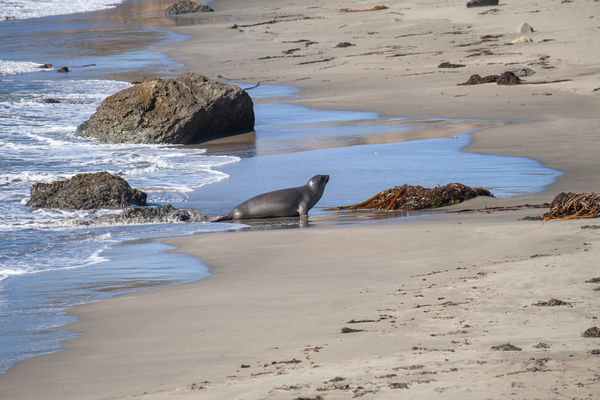
(Download)
Let me rest on you.
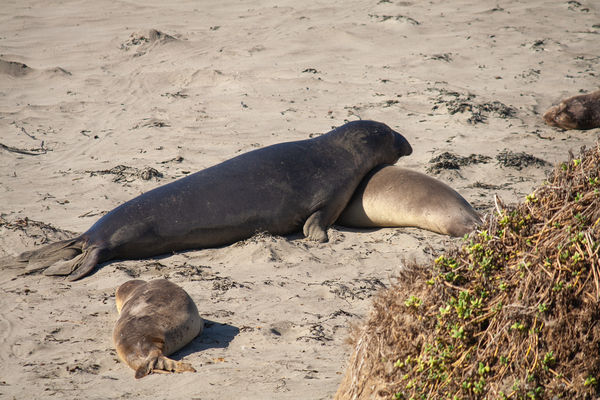
(Download)
The trunk is starting to grow on this one
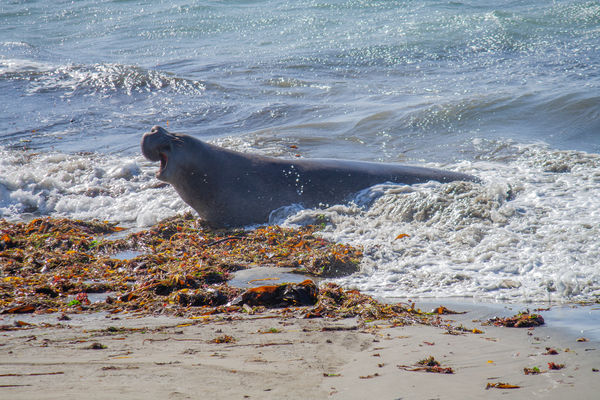
(Download)
A few Pelicans taking flight
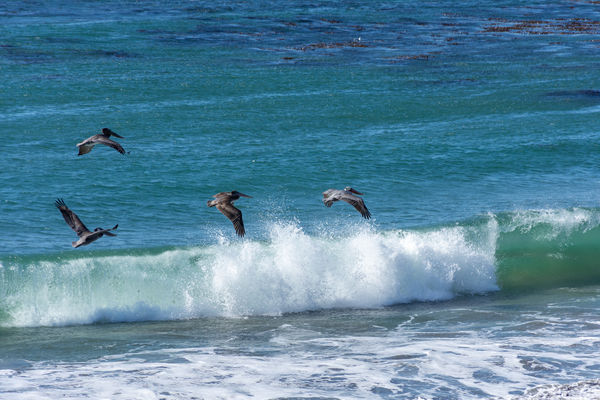
(Download)
A couple of youngsters play fighting
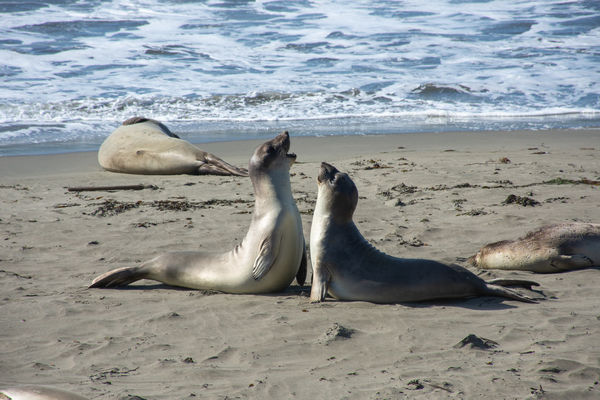
(Download)
A group sunning
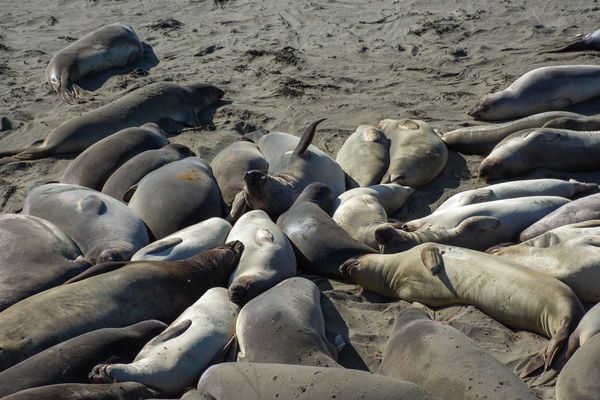
(Download)
This gull flew right over my head, I turned and shot, got lucky.
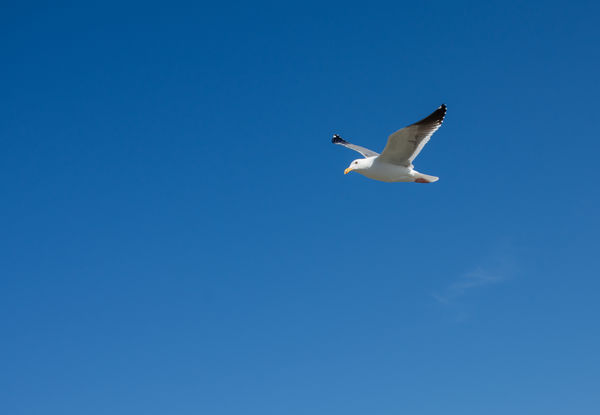
(Download)
Piedras Blancas Light from the seal beach 2-3 miles away
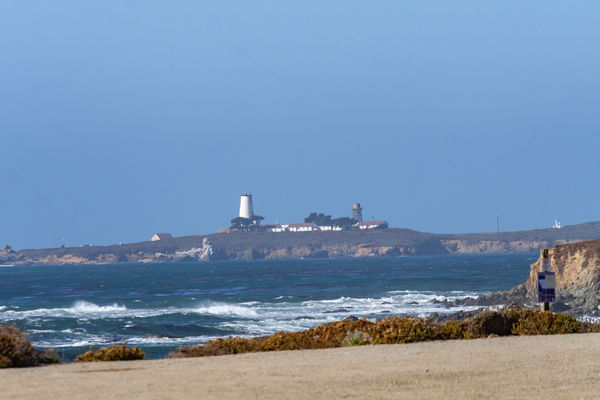
(Download)
Nov 28, 2019 15:25:41 #
Cool. I had no idea any elephant seals came to shore on North America.
Thanks for sharing
Thanks for sharing
Nov 28, 2019 15:38:53 #
WDCash wrote:
Cool. I had no idea any elephant seals came to shore on North America.
Thanks for sharing
Thanks for sharing
Thanks for looking Bill. Happy Thanksgiving.
Nov 28, 2019 15:50:33 #
Nov 28, 2019 16:02:19 #
WDCash wrote:
Cool. I had no idea any elephant seals came to shore on North America.
Thanks for sharing
Thanks for sharing
Funny I was just thinking the same thing. Must be a “NJ thing”!
Nov 28, 2019 16:03:29 #
frankraney wrote:
While in Morro Bay I took a trip up the coast to s... (show quote)
Love the images. Especially the fact that you managed to capture different ages. Also, thanks for the information. Lots I didn’t know.
Nov 28, 2019 16:33:24 #
Nov 28, 2019 17:08:16 #
Nov 28, 2019 17:35:40 #
Nov 28, 2019 20:13:36 #
Bob Mevis wrote:
Very nice.
Thanks for looking Bob, and the nice comments. Glad you like them.
Nov 28, 2019 20:14:38 #
MadMikeOne wrote:
Love the images. Especially the fact that you managed to capture different ages. Also, thanks for the information. Lots I didn’t know.
Thanks for looking Mike. Glad you enjoyed them as much as I did taking them.
Nov 28, 2019 20:15:33 #
Iron Sight wrote:
Thanks for looking iron sight. that's as close as I could get to the lighthouse I didn't have time to go up to it and that's a shame since I was so close.
Nov 28, 2019 20:16:25 #
Nov 29, 2019 07:25:11 #
Nov 29, 2019 09:29:24 #
WDCash wrote:
Cool. I had no idea any elephant seals came to shore on North America.
Thanks for sharing
Thanks for sharing
I remember seeing them at Ano Nuevo back in the 1980’s. Prior to that all the rookeries were on islands. It was very exciting, especially when the bulls start fighting. And the babies are cute, but not small.
If you want to reply, then register here. Registration is free and your account is created instantly, so you can post right away.








